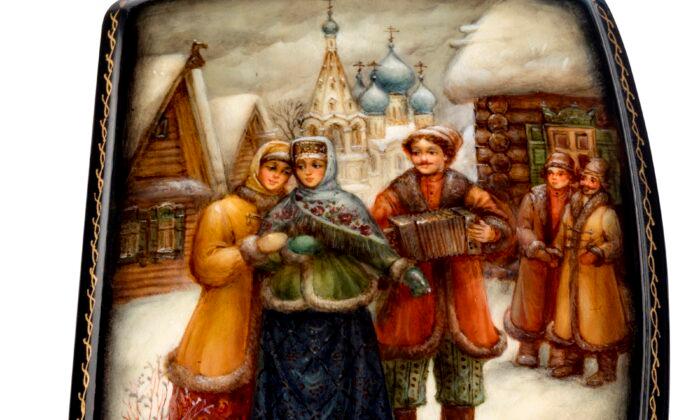British tailor Zack MacLeod Pinsent’s passion for historical-era clothing truly began when he ceremoniously burned his last pair of jeans at the age of 14. He wore clothing from different periods, such as the Victorian era, but came upon the fashions of the Regency and Georgian periods when he was invited to a ball in London and had nothing to wear.
“I went on eBay, found a costume tailcoat, chopped it up to fit me. I still have the photos, and I cringe,” he said with a laugh. “But I caught the bug from that point. I really loved the aesthetic.”
The 26-year-old tailor now dresses exclusively in styles from the mid-18th-century to early 19th-century Georgian and Regency eras.

Feeling ‘Ten-Feet High’
Georgian and Regency-era dress is not simply attractive for its ornate designs, symbolic embroidery, flattering silhouettes, and bold use of color. It’s about wearing something beautiful to make you feel beautiful.He said that people often judge him, accusing him of dressing only for attention.
“If I just wanted to do it for attention, I'd do something that would be far easier, require a lot less research, hand-sewing and everything. I wear [historical clothing] 24/7. It’s not just when I pop out of the house or go to a big event, it’s all the time. That’s what makes it a genuine style as opposed to an affectation,” he said in an interview.
For example, Pinsent was measuring a lady for a Regency gown, which she said she may even wear to her wedding. She sat next to him, discussing samples of fabrics.
“She said, ‘Oh, I’m a size—’ I stopped her and said, ‘No, you aren’t a size anything. This will be your size. It will fit you,’” Pinsent recalled. “She just burst into tears because her whole life she'd been defined by a number on a label, a completely arbitrary number.”
Pinsent explained that these sizes and standards of the modern fashion industry—held by clothing, modeling, and makeup companies—are designed to make people think poorly about themselves. That way they end up consuming more to feel better.

“The whole beauty and fashion industries are geared toward [the idea that] you have to look and be a certain way for you to be of any value,” he said.
Pinsent said his client’s reaction was unexpected since he’s been making bespoke clothing for so long. But, in retrospect, he can see how liberating it is to finally own something made specifically for you. Pinsent’s client told him she was so inspired by her interaction with him, she then found local dressmakers near her home and now only buys bespoke.
“Clothes throughout history have always had something to say and something to convey. Nowadays clothes have nothing to say; they’re completely silent,” he said.
Pinsent’s tailoring can work within different budgets as well. You can order more simple fabrics like linen or expensive, lavish ones. For example, he’s ordered silk velvet handmade in Venice costing 1,000 pounds per yard for one of his clients.
Pinsent explains that Georgian- and Regency-period clothing is also particularly beautiful for its flattering silhouettes and vibrant use of color. For more corpulent men, for example, the high waist creates a smoother line, rather than having one’s belly hang over the belt.
“Nowadays men have stuck to navy blue, gray, and brown, which is just so depressing,” he said. “The military heroes of their day were running into battle wearing lavishly embroidered uniforms” with hearts, flowers, and other ornate detailing on them.
With modern dress standards, “we’ve lost a bit of self-respect and sometimes respect for others,” he said. “Popping down to the shops in basically your pajamas, [it’s hard to be] to be taken seriously at the same time.”

Traditional Fabrics
Not only does clothing from these historical eras make one feel confident, but Pinsent uses traditional artisanal practices that help the planet. He uses historically accurate, 100 percent natural fibers such as linen, manufactured relatively close to him, in Ireland, and Belgium, to lower the carbon footprint.Pinsent said we also need to stop using terms such as “polyester,” which hides the material’s true nature.
“It’s plastic,” he said. “It’s not going to go anywhere. It’s going to remain on the earth for thousands of years, pollute the fish, and we’re going to eat it in sushi.”
By making sustainable, bespoke historical clothing, Pinsent is doing more than making handsome fashion. He’s accentuating the interconnected relationship between our outer and inner worlds; by wearing beautiful, ethically produced classical regalia, you elevate your spirit as well.
“It’s all about taking those smallest steps to be conscious with various things,” he said. “We’re on this earth for such a short period of time. If the clothing you’re wearing isn’t making you happy, then you’re missing the point.”





